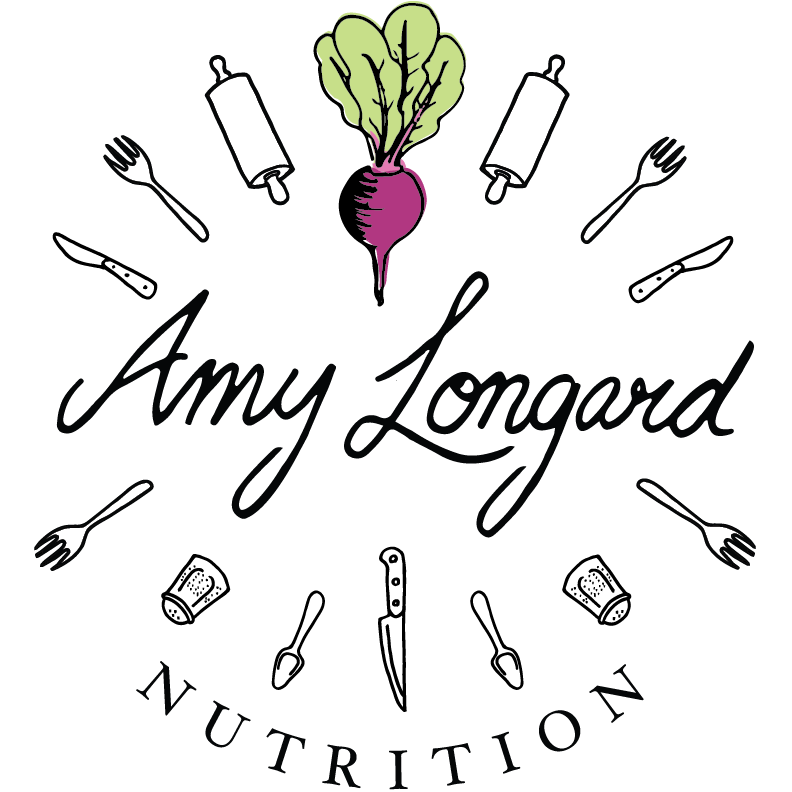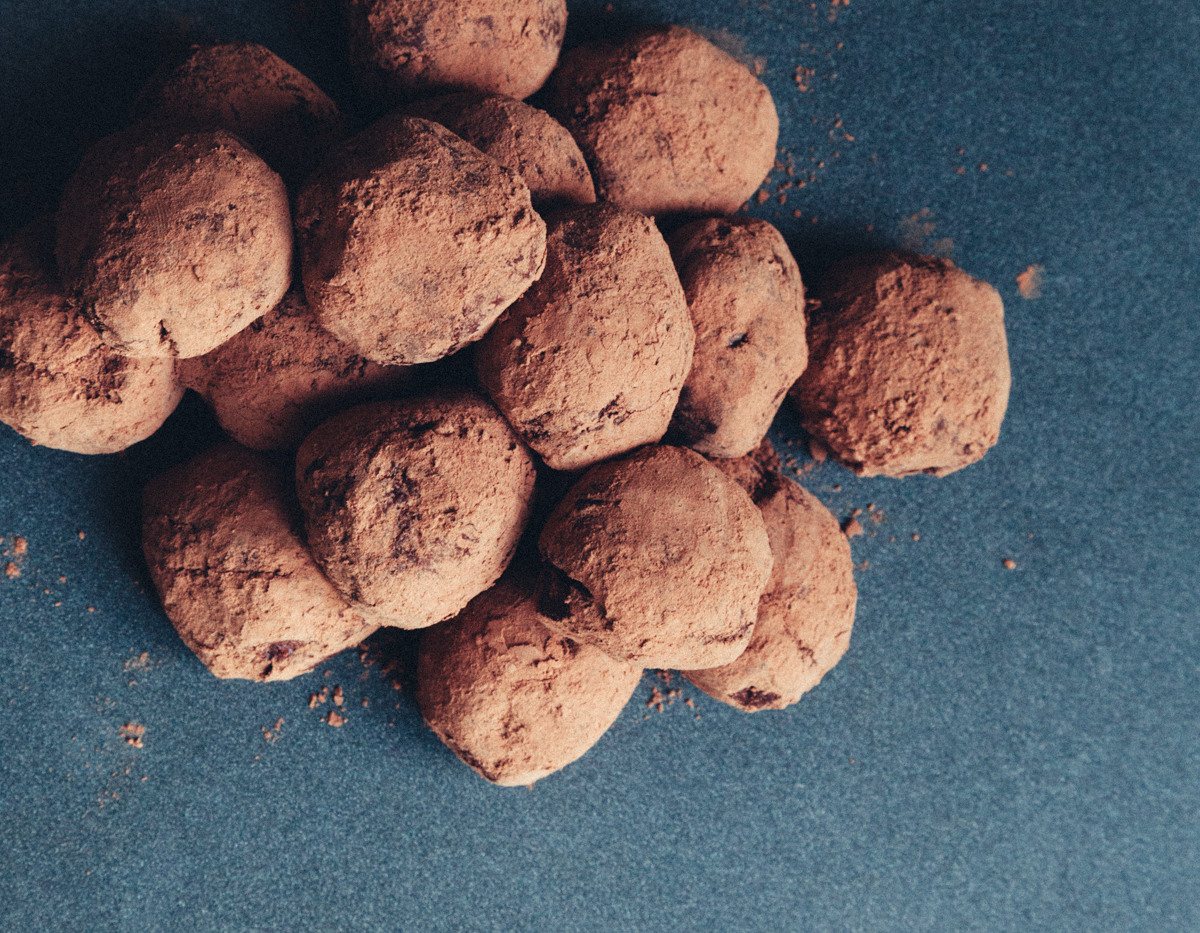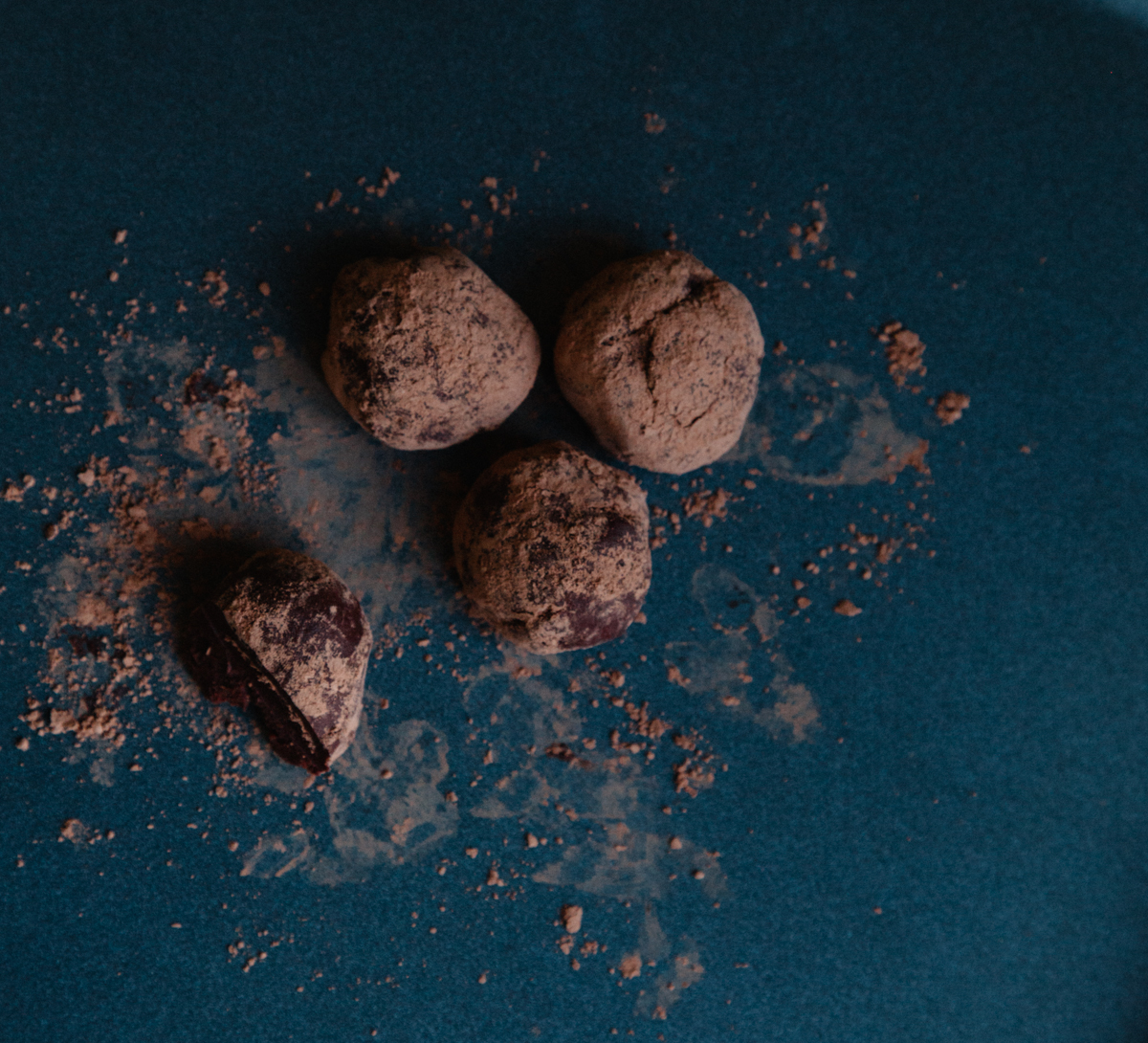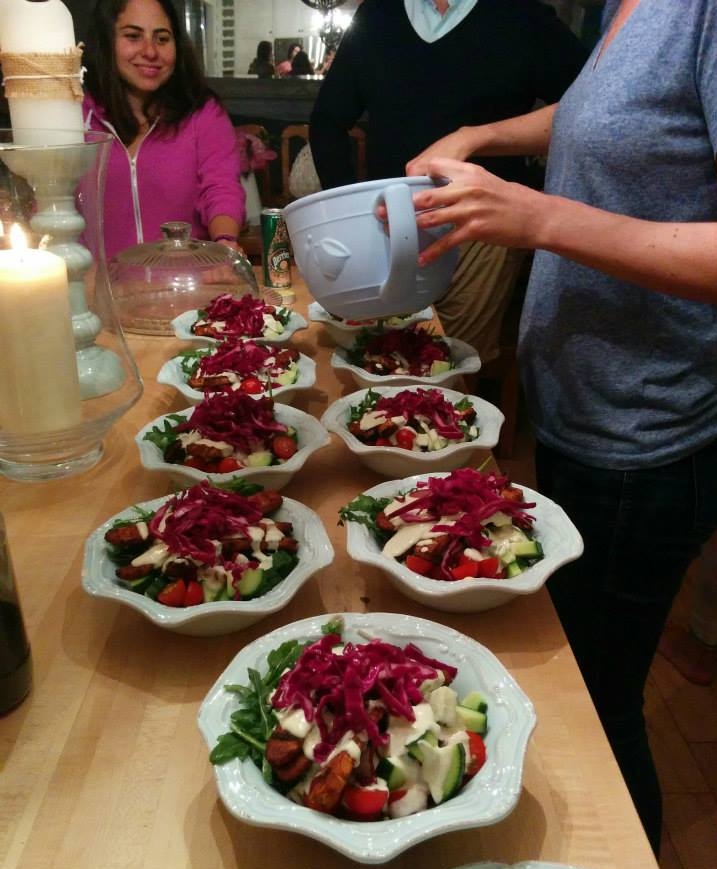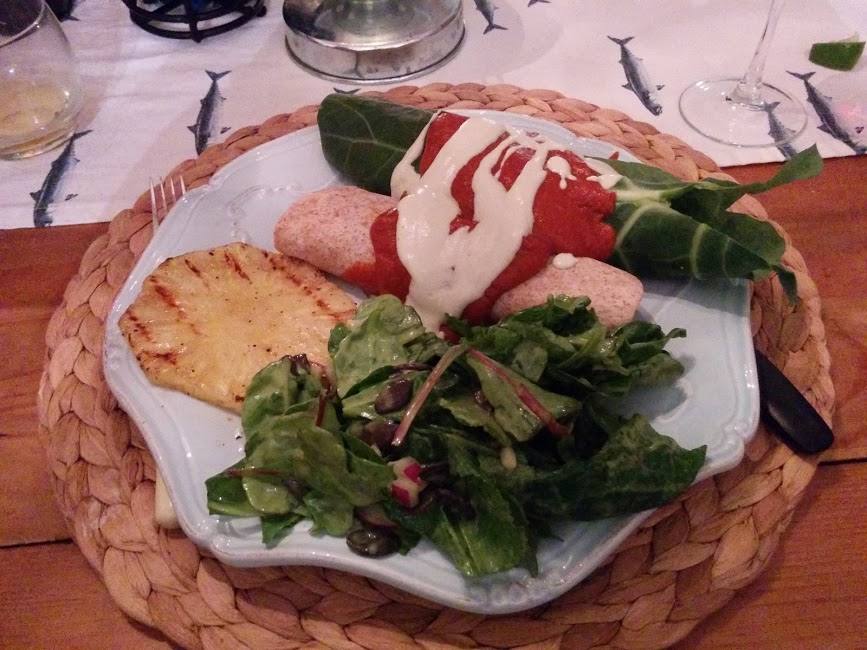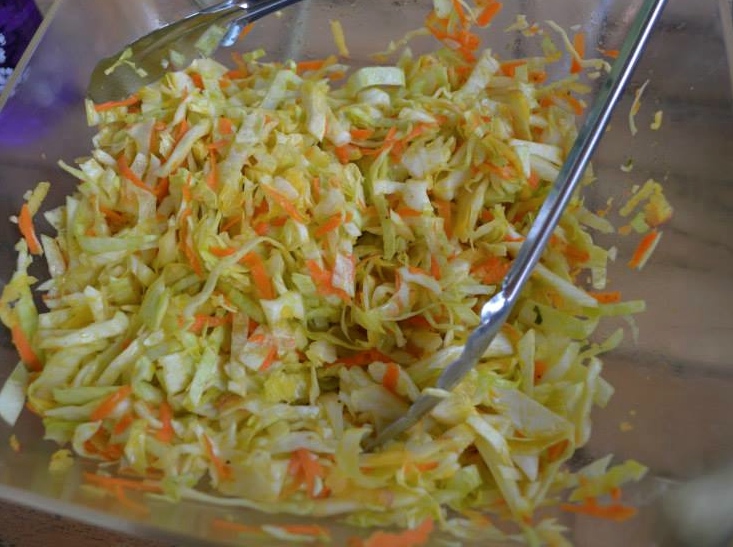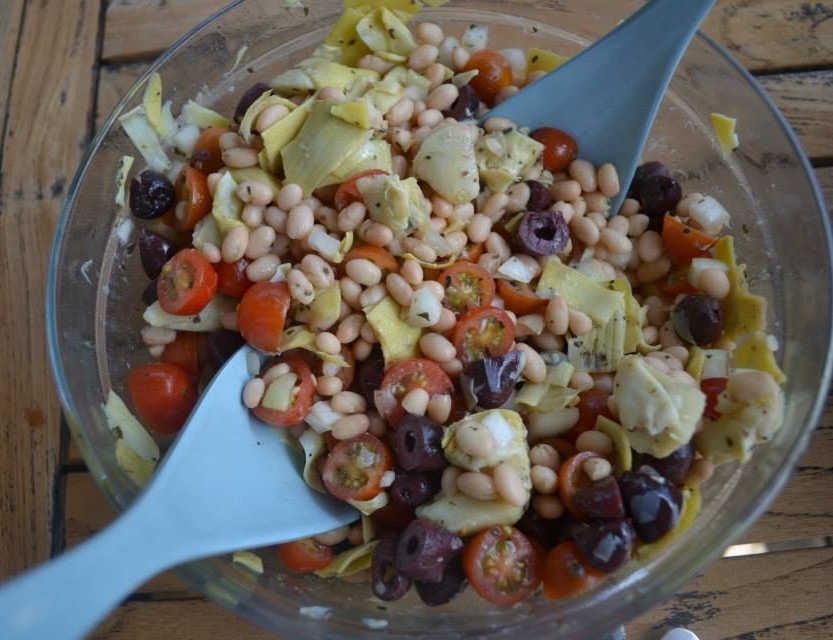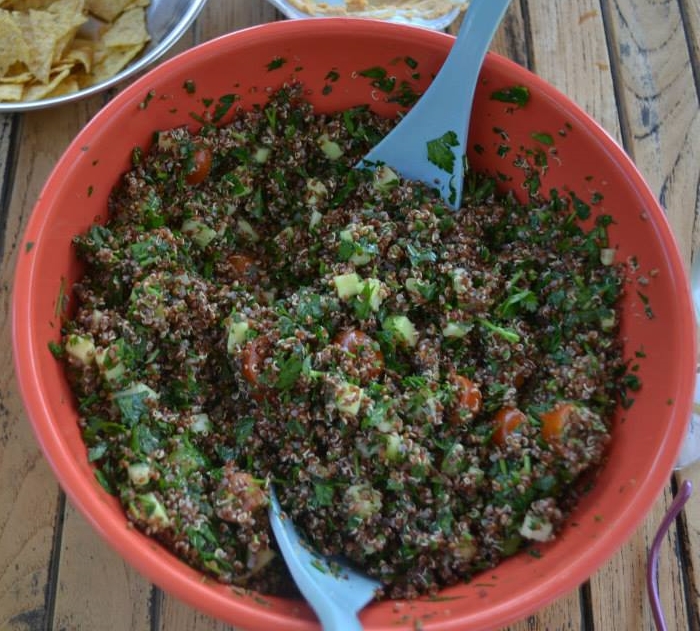With the holiday parties and gatherings in full swing, I wanted to be sure that I was ready and well equipped to handle the hustle and bustle of the season. My first instinct was to reach out to my friend Dr. Kathy Van Zeyl. Dr. Kathy is a naturopathic doctor (ND) with expertise in areas such as sports medicine, energy balance, detoxification, weight loss and adrenal support. Dr. Kathy and I met last year when we both started working at EPIC Fitness + Lifestyle. From the day I met her, I loved her holistic and realistic approach to dealing with clients and I've been continually amazed by her ability to help people overcome daunting health challenges.
In the last year, I've gotten to know her both professionally and personally. I'm lucky to have her as my ally for helping clients and also my go-to friend for dog walks. Even our pups have become pals!
Dr. Kathy is truly a wealth of knowledge and I knew she'd have lots of great information to share with us. Without further ado, please read on to learn her tried and true strategies for staying healthy during the holidays. She touches on topics such as managing stress, strengthening your immune system, tips for avoiding craving, and more!
Amy: The holidays are upon us! What are your tips for staying stress free?
Kathy: Busy or high stress periods often lead to elevated release of the stress hormone “cortisol” from your hardworking, non-relenting adrenal glands. These glands are always by your side (quite literally, they’re on both sides hanging out on top of your kidneys!), and help your body to adapt to stress.
Chronic high cortisol can lead to either over- or underactive adrenal function resulting in fatigue, anxiety, insomnia, weight gain and immune suppression amidst other issues. We can’t always remove the stress, but we CAN change how your body responds to it! Support your adrenal glands through stress with these tips to maximize stress resilience and keep these fantastic organs happy.
Sleep – get 7-9 hours of sleep per night, going to bed and waking at the same times consistently. Both your melatonin and cortisol levels fluctuate on a circadian rhythm. Consistency is key for regulating these two very important hormones so you can sleep when you need to, and stay awake and energized the rest of the time.
Eat for steady blood sugar – Include plenty of slowly-absorbing protein, healthy fats and nutrient-rich vegetables to stabilize blood glucose (your brain’s primary fuel source!) and decrease your body’s stress response from sugar levels that are either too high or too low.
Take 5… – As in 5 minutes before bed to do some deep breathing, stretching or meditation to relax the nervous system and calm your body’s stress response. We can’t all fit an hour of yoga into our schedule, but 5 minutes a day is easier to find and can go a long way!
Move it! – One of my favourite prescriptions is EXERCISE (!!!) for all of the side-“benefits” that come along with it. Pick something you enjoy whether it’s running (my favourite – yes, even in winter!!), hiking, skating, skiing, snow-shoeing, weight-lifting, yoga, Zumba, team sports, etc. Pick something you really enjoy so you’ll be less likely to quit. Movement can balance stress resilience, improve sleep and kickstart metabolism. Even 20-30 minutes 3-5 times a week can give these benefits, so conquer the excuses and take some advice from Nike… JUST DO IT!!!
Amy: Once the hustle and bustle of the holidays are over, it's not uncommon to get sick. Do you have any advice on how to prevent this from happening?
Kathy: For prevention, the key is managing stress (see above!). If you’re starting to feel a cold coming, these quick tips can help strengthen your system to beat those bacteria and viruses out of your system.
Oil of oregano – If you’ve ever tried it before, you’ll know exactly why those pesky pathogens tend to bite the dust after taking it. Oil of oregano is one of nature’s most potent antibiotics and a very effective side-kick for your immune system. Try taking 3-5 drops 3 times a day at the first signs of a cold to give some antimicrobial support. Can’t stand the taste? A teaspoon of honey can ease the strong flavour and provide additional germ-fighting support!
Vitamin C – Although Vitamin C doesn’t prevent a cold, it can reduce the intensity and duration of sickness once it hits. They key is in the dose! To maximize vitamin C absorption, take 1000mg every 2-4 hours until you reach what we naturopaths lovingly refer to as “bowel tolerance.” This is when stools start to soften as your digestive tract has reached its maximum absorption for vitamin C. Keep this level in mind and for maximum immune and vitamin C efficiency, take one less dose than what caused stool softening. The more the merrier, but only if you can absorb it!
Fluids – Include lots of water, soups and herbal teas such as ginger (especially for fevers), honey & lemon or licorice root. A high fluid intake can decrease the thickness of mucous secretions so your hardworking immune system can trap and remove harmful germs from the body. Sticking with fluids, low fibre, low fat and easily digestible foods (well-cooked proteins and vegetables!) also helps to minimize the work your body has to do to put these nutrients to good use.
Amy: Salty and sweet snacks are so readily available this time of year. Any suggestions to help curb the cravings?
Kathy: Yes! The first step is recognizing where the craving comes from. Here’s a quick breakdown of what these cravings may mean:
Sugar – These cravings often come with fluctuations in energy levels available in the bloodstream. Low blood sugar from overconsumption of sugar and carbohydrates or underconsumption of other nutrients can trigger the brain to send ravenous hunger cues (ex. “feed me sugar now, I’m starving!!!”). Instead, eat slow-absorbing nutrients (proteins, healthy fats, veggies and fibre) and try to do so every 4-5 hours. Especially if you’re about to head out to a holiday party, eat something with protein or fibre first to reduce the hunger pangs and overindulging. For a healthy substitute, try fresh fruit with almond butter, or chocolate avocado pudding made from avocadoes, cocoa powder and coconut milk to satisfy your sweet tooth.
Salt – Salt-seeking on the other hand is most commonly linked with elevated stress levels. Over time from high stress and adrenal strain (see question # 1 above), blood pressure changes can take place and the adrenals will have a difficult time maintaining a consistent amount of pressure (adrenal glands release aldosterone to regulate blood pressure response). As it’s often more common to see low blood pressure as a result of chronic stress, salt cravings are a natural way your body tries to readjust your blood pressure to normal. Frequent salt cravers should pay attention to stress management and support their adrenals. For a quick, healthy alternative, look for things like bean chips, guacamole, hummus or trail mix to satiate the cravings without overindulging in greasy snacks.
One more highly prevalent craving is chocolate. Where does this come from? Sometimes it’s the same link as with sugar cravings (low energy and brain fuel), but it may also be a sign of magnesium deficiency! Cocoa powder is naturally high in magnesium, so chocolate cravings may be a way for your body to get the nutrients it’s lacking. Refer back to the chocolate avocado pudding suggestion for a low sugar, high magnesium treat (as avocados also contain high magnesium levels!).
Amy: The holidays are synonymous with overindulgence. Despite best intentions, most of us fall victim to over eating or drinking a little bit too much. Do you have any top secret naturopathic remedies you can share?
Kathy: Perhaps…. Maybe… Ok the answer is YES, but just don’t tell anyone else because I want you to try your best to behave! Obviously the first rule is try not to overindulge. But when it’s too late these are my top go-to’s:
B vitamins – Used in just about all metabolic reactions, B vitamins can help to recover your energy and kickstart the metabolism and elimination of unwanted substances in the body. These area best taken early in the day and don’t be surprised if your urine is bright yellow afterwards! B vitamins naturally contain an orange or yellow pigment.
Lemon water – A great source of electrolytes and vitamin C, lemon water can help improve digestion, reduce acidity in the body, and rehydrate after excessive water loss due to alcohol. Over the holidays try to start your day by squeezing out the juice from half a lemon and drink it with warm water on an empty stomach. To save some time, pre-squeeze a bunch and keep it in a glass jar in the fridge!
Milk thistle – Your liver is the hardest working detoxification organ in your body, so give it some holiday loving if you’re going to load on the work! Milk thistle extract (silymarin) helps to protect the liver against damage, regenerates damaged cells, and upregulates detoxification pathways. Two key things to keep in mind any time you’re dealing with herbs are quality and safety – consult with a professional to make sure it doesn’t interact with any of your medications and source out a high quality herbal company you can trust. We naturopaths are here for a reason! Also I’ve got way too much information stored in my head, so come use some of it please!
Wishing you a happy, healthy, stress-free holiday and may the New Year bring along a new you!
For more information about Dr. Kathy, or to book an appointment with her, please visit her website. You can also find her on Facebook and Twitter.
